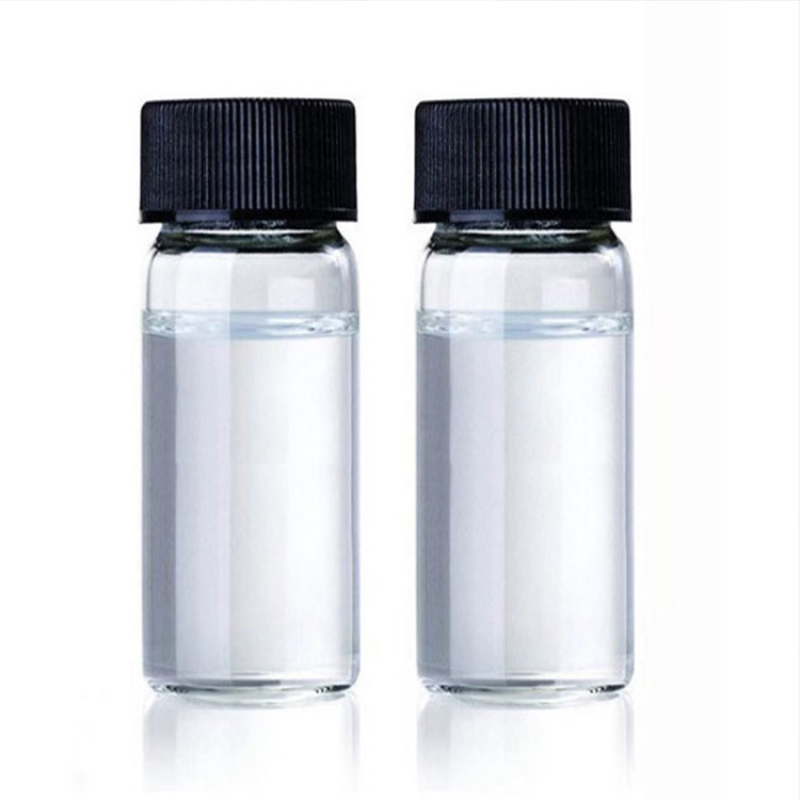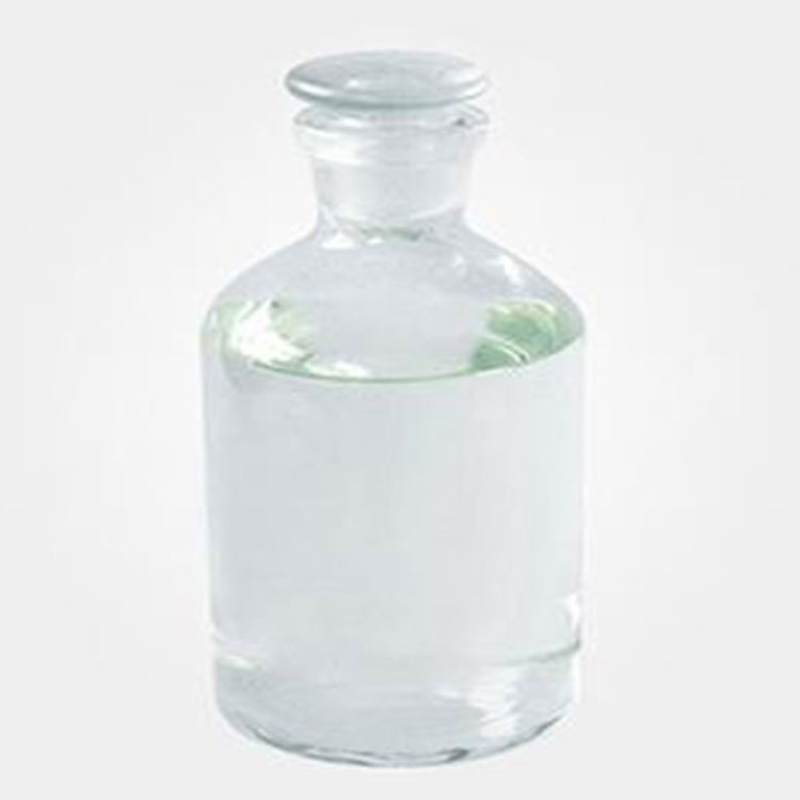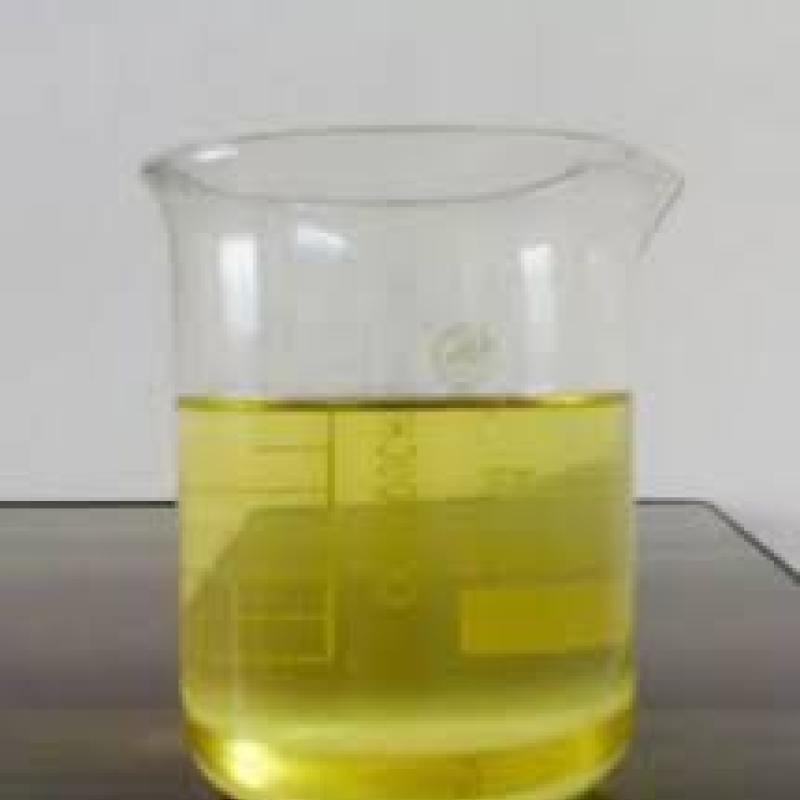Products Description of Mogroside V CAS#88901-36-4 Mogroside V is extracted from a plant called Momordica grosvenori. Momordica grosvenori is a vine plant of the Cucurbitaceae family (Mogrosvenori genus). The mature fruit of Momordica grosvenori is extremely sweet and is rich in cucurbitane-type tetracyclic triterpenoid saponins, among which Mogroside V is the main sweet component, with a dry weight content of up to 1.6%.
今コンタクトしてください
Products Description of 2-Bromo-2-nitro-1,3-propanediol CAS#52-51-72-Bromo-2-nitro-1,3-propanediol CAS#52-51-7 is an intermediateProduct Parameters of 2-Bromo-2-nitro-1,3-propanediol CAS#52-51-71. Names and IdentifiersName2-Bromo-2-nitro-1,3-propanediolSynonyms 1,3-Propanediol,2-bromo-2-nitro-2-Brom-2-nitropropan-1,3-diol2-Bromo-2-nitro-1,3-propanediol,BNPD,BNPK2-BroMo-2-nitropropane-12-bromo-2-nitropropane-1,3-diol2-Bromo-2-nitropropane-1,3-diol (Bronopol)3-diol(Bronopol)4-01-00-025014-01-00-02501(Beilstein Handbook Reference)b-Bromo-b-nitrotrimethyleneglycolBroken Ba
今コンタクトしてください
O-(Tetrahydro-2H-pyran-2-yl)hydroxylamine CAS#6723-30-4O-(Tetrahydro-2H-pyran-2-yl)hydroxylamine Chemical PropertiesMelting point 34-37 °C (lit.)Boiling point 81 °C/20 mmHg (lit.)density 1.1274 (rough estimate)refractive index 1.4206 (estimate)Fp 180 °Fstorage temp. Keep in dark place,Inert atmosphere,Store in freezer, under -20°Csolubility DMSO (Slightly), Methanol (Slightly)pka3.28±0.20(Predicted)form Low Melting Solidcolor WhiteSafety InformationHazard Codes XiRisk Statements 36/37/38Safety Statements 26-36WGK Germany 3HS
今コンタクトしてください
N-Methyl-2-Pyrrolidone CAS# 872-50-4N-Methyl-2-pyrrolidone is a colourless or light yellow liquid with an amine odour. It can undergo a number of chemical reactions even though it is accepted as a stable solvent. It is resistant to hydrolysis under neutral conditions, but strong acid or base treatment results in ring opening to 4-methyl aminobutyric acid. N-Methyl-2-pyrrolidone can be reduced to 1-methyl pyrrolidine with borohydride.
今コンタクトしてください
Products Description of N-Methyl-2-pyrrolidone CAS#872-50-4N-Methylpyrrolidone is referred to as NMP, molecular formula: C5H9NO, English: 1-Methyl-2-pyrrolidinone, appearance is colorless to light yellow transparent liquid, slightly smell of ammonia, miscible with water in any proportion, soluble in ether, acetone And various organic solvents such as esters, halogenated hydrocarbons, aromatic hydrocarbons, etc., almost completely mixed with all solvents, with a boiling point of 204°C and a flash point of 91°C. It has strong hygroscopicity and stable chemical properties.
今コンタクトしてください
Products Description of Iodomethane CAS#74-88-4Methyl iodide is a halogenated hydrocarbon with the molecular formula CH3I, MeI. It is a monoiodine substitute of methane. The boiling point is 42.4℃, the relative density is 2.279 (20/4℃), it is a volatile liquid with high density at room temperature, the dipole moment is 1.59D, and the refractive index is 1.5304 (20°C, D), 1.5293 (21°C, D). Methyl iodide is miscible with common organic solvents, slightly soluble in water, soluble in ethanol and ether. The pure product is colorless and has a special odor.
今コンタクトしてください
Products Description of 4'-Chloroacetophenone CAS#99-91-2Chloroacetophenone is an organic compound with the molecular formula C8H7ClO. It is a white liquid at room temperature. Insoluble in water, soluble in organic solvents.
今コンタクトしてください
Cyclohexanol CAS#108-93-0Cyclohexanol is a clear, colorless to light yellow, viscous, hygroscopic liquid with a camphor-like odor. A detection smell threshold awareness of sixty four μg/m3 (155 ppbv) was once said through Punter (1983). It has a pretty excessive flash factor and boiling range. A solvent for cellulose ethers, ester gum,shellac, low viscosity silicones and polyvinyl chloride. lt has a pretty confined use in display screen inks.
今コンタクトしてください
Products Description of Cobalt Sulfate Heptahydrate CAS#10026-24-1A common cobalt compound that appears as a blue crystalline solid and is soluble in water. In the air, it gradually loses its crystal water and becomes powdery. Cobalt sulfate heptahydrate is widely used in chemical experiments. It can be used as a catalyst in organic synthesis reactions. In addition, it can be used to prepare other cobalt compounds, such as cobaltates and cobalt oxides.
今コンタクトしてください
Tert-Butyl Methyl Ether CAS# 1634-04-4Methyl tert-butyl ether (MTBE) is a colorless liquid with a distinctive, unpleasant odor. It is made from mixing chemical substances such as isobutylene and methanol, and has been used considering the fact that the Nineteen Eighties as an additive for unleaded gasolines to obtain extra environment friendly burning.MTBE is additionally used to dissolve gallstones.
今コンタクトしてください
Products Description of Aminopyrazine CAS#5049-61-6Aminopyrazine is the matrix for the four-component synthesis of imidazolidinediones, an organic synthesis intermediate and a pharmaceutical intermediat.Aminopyrazine Chemical PropertiesMelting point 118-120 °C (lit.)Boiling point 167.6°C (rough estimate)density 1.1031 (rough estimate)refractive index 1.5200 (estimate)storage temp. Keep in dark place,Inert atmosphere,Room temperaturesolubility soluble in Methanolpka3.22±0.10(Predicted)form Crystalline Powdercolor Slightly yellow to beigeWater Solubil
今コンタクトしてください
Sodium Lauroylsarcosinate CAS# 137-16-6Sodium lauryl creatine (INCI; Sodium n-lauroyl sarcosine is a mild, biodegradable anionic surfactant derived from sarcosine that is used as a foam and cleaner in shampoos, shaving foams, toothpastes and foam washing products.
今コンタクトしてください
Products Description of Bilirubin CAS#635-65-4This product is mainly derived from the reduction product of heme in hemoglobin through a series of catabolism after the disintegration of aging red blood cells. It is golden yellow or dark reddish brown monoclinic crystal, odorless and tasteless. Soluble in organic solvents such as benzene, chloroform and carbon disulfide; also soluble in hot mixture of ethanol and chloroform; sodium salt is easily soluble in water, but calcium salt, magnesium salt and barium salt are insoluble in water.
今コンタクトしてください
Products Description of Bismuth trioxide CAS#1304-76-3Yellow monoclinic crystals. Soluble in acid, insoluble in water and alkali. Can be reduced by carbon and hydrogen. Made by heating and decomposing bismuth nitrate. Used to make metallic bismuth, catalysts and bismuth oxide superconductors.Bismuth oxide is also known as "bismuth trioxide". Pure products include α-type, β-type and δ-type. α-type is yellow monoclinic crystal with a relative density of 8.9 and a melting point of 825℃. It is soluble in acid but insoluble in water and alkali.
今コンタクトしてください
Products Description of Trimethyl borate CAS#121-43-7Moisture-sensitive liquid, fuming in the air. Melting point -29.3℃, boiling point 68-69℃, forms azeotropic mixture with methanol, azeotropic point 55℃, relative density (20/4) 0.920, refractive index (nD25) 1.3543 (1.3548). Very flammable, flash point -1℃. Miscible with ether, methanol, tetrahydrofuran, isopropylamine and hexane.
今コンタクトしてください
Products Description of Tetrahydropyran CAS#142-68-7Tetrahydropyran, also known as oxadiazine, is a six-membered oxygen-containing saturated heterocyclic ring. It is a colorless, flammable liquid at room temperature with a special smell. It is miscible in water, ethanol, ether, and other organic solvents. It generates explosive organic peroxides under light. It is prepared by hydrogenation of dihydropyran in the presence of Raney nickel or reaction of 5-dibromopentane and water in the presence of zinc oxide.
今コンタクトしてください
Products Description of O-Phenanthroline CAS#66-71-71,10-Phenanthroline monohydrate is an organic intermediate, white crystalline powder. It is a redox indicator, a reagent for the determination of ferrous iron, palladium, vanadium, copper, and iron.Monohydrate is a white crystalline powder.
今コンタクトしてください
Products Description of (2-Bromoethyl)benzene CAS#103-63-9β-Bromophenylethane is an important intermediate for the synthesis of highly efficient brominated flame retardant polybrominated styrene, and is also commonly used in the preparation of organic synthesis intermediates. For example, β-Bromophenylethane can be used to prepare 4-(4-phenylbutoxy)benzoic acid, an intermediate for preparing pranlukast. Pranlukast was first successfully developed by Ono Co., Ltd. of Japan as an anti-asthma drug and was launched in Japan in 1995.
今コンタクトしてください
Products Description of 1-(4-Chlorophenyl)Piperazine Dihydrochloride CAS#38869-46-4Para-Chlorophenylpiperazine (pCPP) is a psychoactive drug of the phenylpiperazine class. It is relatively obscure, with limited human use, and produces slightly psychedelic effects.
今コンタクトしてください
Products Description of 4-Chlorophenethylamine CAS#156-41-24-Chlorophenethylamine is an organic compound with the molecular formula: C8H11ClN.Chemical PropertiesBoiling point 60-65 °C0.1 mm Hg(lit.)density 1.112 g/mL at 25 °C(lit.)refractive index n20/D 1.548(lit.)Fp 223 °Fstorage temp. Store Coldpka9.72±0.10(Predicted)form Liquidcolor Clear colorless to yellowSpecific Gravity1.12BRN 508247InChIKeySRXFXCKTIGELTI-UHFFFAOYSA-NCAS DataBase Reference156-41-2(CAS DataBase Reference)Safety InformationHazard Codes Xi
今コンタクトしてください
Products Description of 4-(3-AMINOPHENYL)-2-METHYLPYRIMIDINE CAS#175201-90-83-(2-Methylpyrimidine)aniline is a chemical.CAS No.
今コンタクトしてください
Products Description of 1,4-Bis-[4-(3-acryloyloxypropyloxy)benzoyloxy]-2-methylbenzeneCAS#174063-87-71,4-Bis-[4-(3-acryloxypropoxy)benzoyloxy]-2-methylbenzene can be used in the field of photography to synthesize fast-erasable dyes, filter materials, charge transfer agents, etc.1,4-Bis-[4-(3-acryloyloxypropyloxy)benzoyloxy]-2-methylbenzene Chemical PropertiesBoiling point 733.5±60.0 °C(Predicted)density 1.219vapor pressure 0.003Pa at 25℃storage temp. Keep in dark place,Sealed in dry,Room Temperatureform powdercolor WhiteWater Solubility 5.3μg/L at 20℃Log
今コンタクトしてください
Products Description of 2-(4-FLUORO-PHENYL)-PIPERAZINE CAS#65709-33-32-(4-Fluorophenyl)-piperazine is a common pharmaceutical intermediate.2-(4-FLUORO-PHENYL)-PIPERAZINE CAS#65709-33-3 Chemical PropertiesMelting point 111-114°CBoiling point 287.2±35.0 °C(Predicted)density 1.079±0.06 g/cm3(Predicted)storage temp. 2-8°Csolubility DMF: 30 mg/ml; DMF:PBS(pH7.2) (1:2): 0.33 mg/ml; DMSO: 30 mg/ml; Ethanol: 30 mg/mlform A crystalline solidpka8.76±0.40(Predicted)Safety Information HS Code 2933599590Product Application of 2-(4-FLUORO-PHENYL)-PIPERA
今コンタクトしてください
Products Description of 4-Amino-2-chloropyridineCAS#14432-12-3This product is white crystals, m.p.89~91℃, insoluble in water.4-Amino-2-chloropyridine Chemical PropertiesMelting point 90-94 °C(lit.)Boiling point 153°C 5mmdensity 1.2417 (rough estimate)refractive index 1.5110 (estimate)Fp 153°C/5mmstorage temp. Keep in dark place,Sealed in dry,Room Temperaturesolubility DMSO (Slightly), Methanol (Slightly)pka4.73±0.30(Predicted)form Crystalline Powdercolor Light yellowWater Solubility Slightly soluble in water.BRN 108671InChIKeyBLB
今コンタクトしてください























![1,4-Bis-[4-(3-acryloyloxypropyloxy)benzoyloxy]-2-methylbenzeneCAS#174063-87-7](https://sdluxicdn.huazhi.cloud/cdn/ff/UzaxHqC7dqMBX0gCNrVwnr0zZlxBJGLCf_1pR8RV7U8/1719438243/public/styles/chanpinzhutu/public/2024-06/%E7%99%BD%E8%89%B2%E7%B2%89%E6%9C%AB%20%285%29_15.jpg?itok=9zTdC24L)










